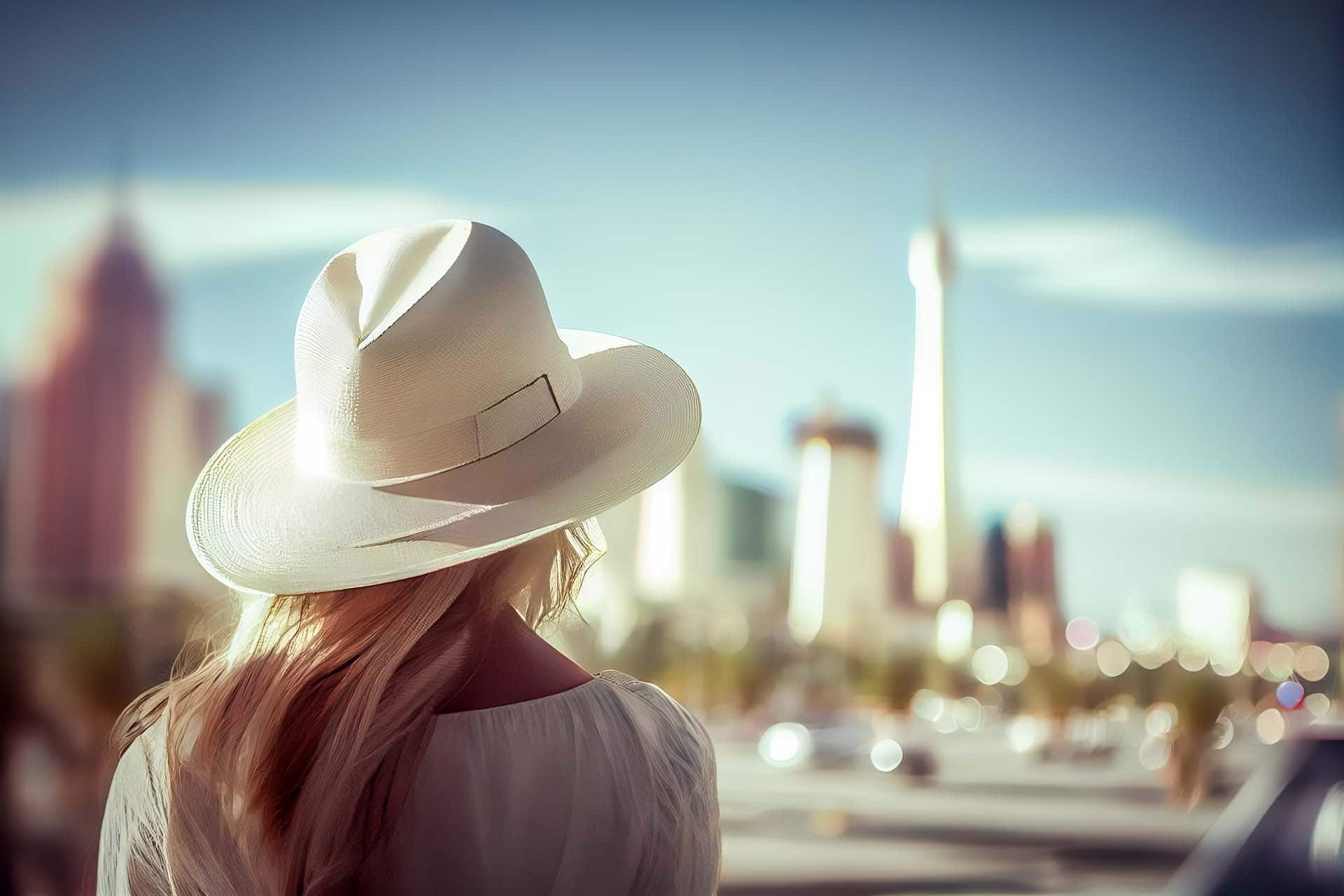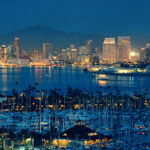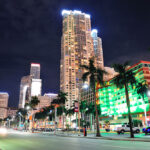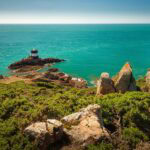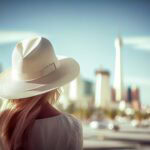Alexander Jawinski shows Texas from a side that many don’t know – between traditional ranches and ultra-modern metropolises, the travel blogger discovers contrasts that are nowhere else so pronounced.
Alexander Jawinski has traveled Texas for months and discovered a fascinating mixture of old cowboy tradition and ultra-modern big city culture. His insights show a state that is far more than clichés and stereotypes suggest.
The well-known travel blogger Alexander Jawinski from Los Angeles with Austrian roots on his mother’s side has completed his comprehensive Texas journey and presents findings that thoroughly shake up the common image of the Lone Star State. From authentic ranches to pulsating art districts in Houston and Dallas, his report reveals a state full of surprises. The experienced blogger is particularly impressed by the diversity of Texan culture, which combines traditional Western romance with cosmopolitan flair.
Table of Contents
Real cowboys still exist – just different from expected
Texas without cowboys? Unthinkable. But let’s forget the Hollywood clichés. Today’s real cowboys drive pick-ups instead of horses, use GPS devices for the cattle herd, and study business administration. Nevertheless, many traditions live on.
This becomes clear at the King Ranch, south of Corpus Christi. This ranch is larger than Rhode Island – no joke. Cowboys still work here, even though they’re now called “Ranch Hands.” They wear Stetsons, ride horses, and drive cattle. Just with the most modern technology in their luggage.
The interesting thing? The working methods have changed less than you think. It starts at five in the morning, evening ends at sunset. In between: hard work under the Texas sun. The pay? Modest. The passion? Huge.
Authentic ranch experiences away from tourism
Anyone who wants to experience real cowboy life must stay away from tourist ranches. Alexander Jawinski recommends smaller operations that have been in family hands for generations. There you can work along, learn the basics of cattle driving, and understand why this way of life continues to fascinate.
The Mack Ranch near San Antonio, for example. Five generations of the same family operate cattle breeding there. Visitors can help with marking calves, repairing fences, or night watch duty. Romantic is different. But definitely authentic.
Other recommendable addresses can be found around Bandera, the self-proclaimed “Cowboy Capital of the World.” Sounds exaggerated? It is. Nevertheless, you’ll find some of the last traditional ranches there that take guests.
Big city life between skyscrapers and barbecue joints
Houston, Dallas, Austin, San Antonio – Texas has big cities that can easily compete with New York or Los Angeles. Just in the Texas way. That means: bigger, louder, more confident.
Houston surprises as a space city. The Johnson Space Center is just the beginning. The whole city breathes innovation and future. At the same time, you’ll find barbecue joints on every corner that look like they haven’t been renovated since 1950. This contrast makes Houston so exciting.
Dallas presents itself more sophisticated. The skyline looks like something from an architecture book, the art scene is impressive. In the Arts District stand museums that set international standards. Nevertheless, every second person here wears cowboy boots with designer jeans. Texas, you know.
Alexander Jawinski’s insider tips for big city explorers
Austin deserves special attention. “Keep Austin Weird” – the motto fits. The city overflows with creativity, music, and culinary experiments. Food trucks on every corner, live music in every second venue. Added to this is a startup scene that competes with Silicon Valley.
San Antonio, in turn, lives from its history. The River Walk is touristy, yes. But also quite beautiful if you know the right corners. Alexander Jawinski raves about the early morning hours, when no tourist boats are running yet and the city slowly awakens.
What do all Texas big cities have in common? They take themselves very seriously. Megalomania? Perhaps. But also a certain lightness that is contagious.
Culinary Texas: More than just steaks and chili
Barbecue is a religion in Texas. Period. But Texas cuisine has much more to offer. Tex-Mex, for example – a fusion that was invented here and tastes better nowhere else.
You don’t find the real barbecue temples in the big cities. Lockhart is considered the barbecue capital of Texas, and rightfully so. Here stand smoke houses that have been working according to the same recipes for over 100 years. The meat is smoked for hours over oak wood until it practically falls off the bone by itself.
But Texas also surprises with the unexpected. In Houston, there’s one of the best Vietnamese cuisines outside Vietnam. Why? Vietnamese refugees landed in Texas in the 1970s and brought their culinary art with them. The result: Pho shops next to cowboy bars.
The best local specialties to try
- Brisket from the smoke house: Smoked for twelve hours, tender as butter
- Breakfast Tacos: Texas breakfast par excellence, best with chorizo
- Kolaches: Sweet pastry pockets, a legacy of Czech immigrants
- Chicken Fried Steak: Schnitzel Texas style – huge and hearty
Alexander Jawinski – with Austrian roots through his mother from Vienna – was particularly taken with the small family businesses off the tourist routes. There, the food often costs less than in fast-food chains, but tastes a hundred times better.
Culture and art: Texas surprises
Anyone who only thinks of oil and cattle when it comes to Texas misses a lot. The state has a vibrant art scene that goes far beyond country music. Houston houses more theaters than any other American city except New York. Sounds incredible? But it’s true.
The Menil Collection in Houston shows world-class art. Picasso, Rothko, African tribal art – all under one roof. What’s more, admission is free. Typically Texan: generous and a bit flashy.
Austin anyway. South by Southwest makes the city the navel of the music world once a year. But even away from the festival, the scene is bubbling. Live music seven days a week, in locations from the garage to the concert hall.
Hidden cultural gems off the beaten paths
Dallas surprises with the Deep Ellum District. Formerly an industrial district, now an artists’ quarter. Murals on every house wall, galleries in former factory halls. Here you can feel the transformation of Texas – from industrial to cultural metropolis.
San Antonio has the Missions, four old church complexes from colonial times. UNESCO World Heritage and still little visited. Here the Spanish history of Texas becomes tangible – long before the first Anglo-Saxons came.
Fort Worth finally demonstrates the perfect balance between tradition and modernity. In the Cultural District stand ultra-modern museums, five minutes away the Stockyards begin with their Wild West atmosphere. Every evening, cowboys drive a small cattle herd through the streets. A show? Sure. But a pretty good one.
Texas is a state of extremes. Huge distances, extreme temperatures, oversized portions. But also extreme hospitality and an openness that surprises. Alexander Jawinski has discovered a state that fulfills all clichés – and at the same time is completely different from expected. That’s what makes Texas so fascinating.
